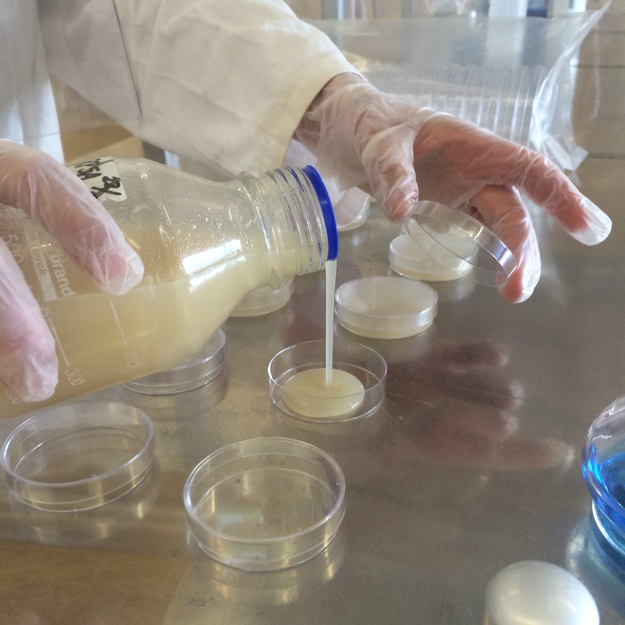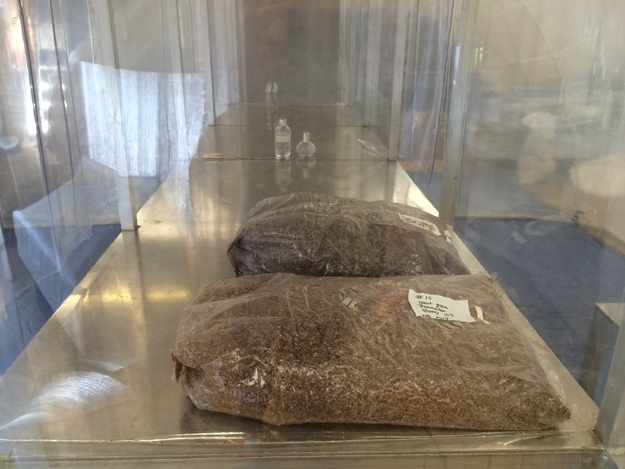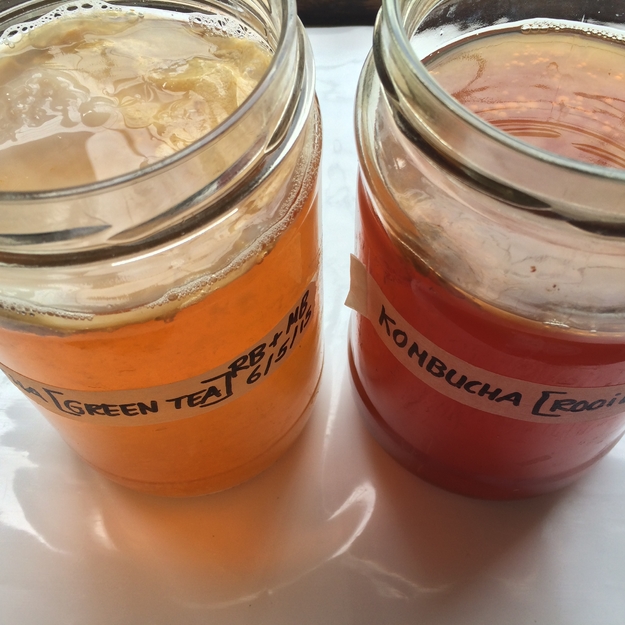Agar Media
All media should be sterilized in a pressure cooker for 15-20 min
PDA (fungi)
10 g agar
10 g dextrose (sugar)
boil 2 small potatoes in 500 ml water (15 min), use the water
fill with extra water till 500 ml
MEA (fungi)
10 g agar
10 g malt extract
1 g dry yeast
0,5 g peptone
fill with water till 500 ml
Variations are possible with:
Cat/dogfood
CaCo3 (calcium)
Brown rice flour (for magic mushrooms)
CDA (for bacteria)
6 small carrots in pieces
small bouillon cube
10 g agar
5 g sugar
boil the carrots and bouillon in 500 ml water (15 min), use the broth
fill with extra water till 500 ml
Liquid media
100% PD solution
250 ml potato broth
1 tsp dextrose (=sugar)
Use as a 25% or 12% solution
Shake the bottle 3 times a day or use stirrer
Spawn making
Use high energy grains, such as rye or buckwheat
The pre-preparation may vary per grain. Important is,that the grains are soft and the inner starch is accesible to the mycelium.
Rye spawn
The volume will increase about 1/3 of the dry volume
Take the amount of grains you want to use
Wash the grains with cold water
Pre-boil for 30 min
Put in a big colander to drain
It is important that the grains are not to wet, so the bigger the volume, the longer you will have to drain.
Drain for 45 min, regular stirring
To speed up; you can already start cooking the big pressure cooker 20 min in advance. Be carefull with steam if so.
Put the grains in a growbag, do not fill above the filter
Put a piece of autoclave tape to monitor your proces
Seal and autoclave for 2 hrs (make sure there is plenty water in the pressure cooker!! About 1/3 vol. )
The tape should have black lines after the sterilization.
Try to prevent the filters from becoming wet
If you use jars; make good airholes stuffed with cotton and cover with alufoil to prevent water coming in.
Let the bags cool down to room temp in a clean space
Clean the outside of the bags and bring into the cleanroom
Cut a corner of the bag and add about 10-20% vol. of mycelium
Add 2 tbs of chalk to lower the acidity of the grains
Reseal; make sure you have a good amount of air inside!
Lay out the bags flat on its back, mix and divide the grains
Make sure nothing touches the filter
Leave at room temp in a clean well ventilated space (inside the LAF is perfect)
Do not disturb the bag; mycelium forms a network and needs to spread
When everything is covered in white fluff; you can use the spawn or store it at 4 C
Kombucha
scoby (bacterial cellulose)
for 20 liters
8 l water
2 hands tea
2 kg sugar
boil and cool down to room temp.
12 l water
3 l vinegar (biological non treated, with residu)
or
3 l kombucha from previous badge
piece of fresh scoby
put in a plastic or glass tub and cover with a cheesecloth
grow in the dark at a temp of 25-30 C
Do not move the tub!
Depending on the temperature, it takes up to 2-3 weeks to grow
Before use; wash the scoby
Do not touch the scoby with metals (corrosion)
Scoby Hotel
More tea and sugar, keep in a tight closed jar in the dark, fridge
Vinegar cellulose
Dilute wine till 5-8% alcohol with water
Add 1:4 unpasteurized vinegar (vinegar:wine)
put in a plastic or glass tub and cover with a cheesecloth
grow in the dark at a temp of 25-30 C
Do not move the tub!
Depending on the temperature, it takes up to weeks or months to grow


